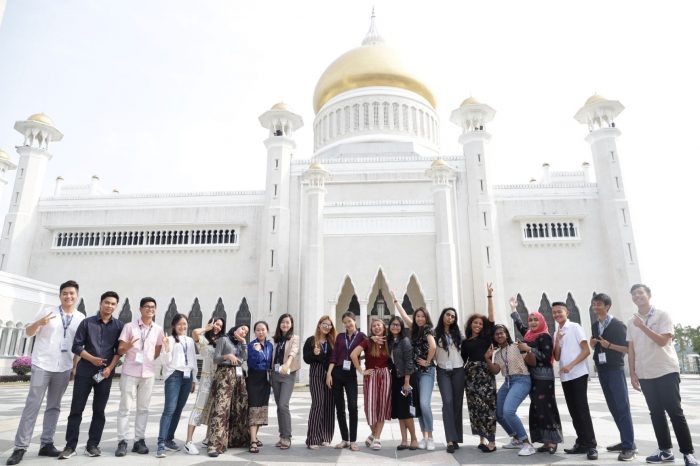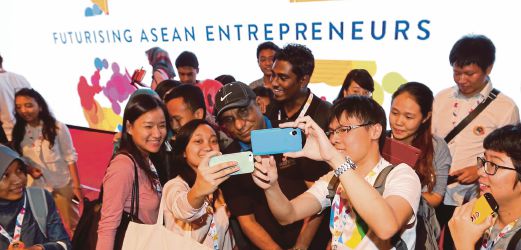Planting the Seed of Asean Identity
Since the beginning of January, I have been invited to speak at more than half a dozen secondary schools in Singapore, Indonesia and Malaysia about the topic of Asean integration and what the future Asean community might look like.
That Asean has suddenly become a hot and popular topic should not be a surprise to any of us, considering that this is the year that the groundwork for the future Asean Economic Community (AEC) is to be laid, and that the economies of the region are gearing up to the challenges that lie ahead. Equally unsurprising is the fact that !n some parts of the region, the reaction to AEC has been negative, and that some elements of Southeast Asian society can only see AEC as the Trojan horse for aggressive and predatory capital penetration, weakening local communities and threatening the sovereignty of their respective states.

That the two reactions -positive and welcoming on the one hand, negative and rejecting on the other -can appear simultaneously tells us something about the complex nature of our region and the challenges that lie ahead for Asean integration. But, the fact that schools, colleges and universities have come on board and are actively encouraging discussions on Asean in some countries is a positive sign that points to the realism and pragmatism that still prevails in some quarters.
The reason why it is so important to reach out to the young is self-evident, for they will be the next generation who will inherit the region in whatever state it is left to them, and it is they who will have to struggle, survive and succeed in a globalised world that will be infinitely more challenging and complex .than that of their parents’ generation. While Asean and the respective states of the regional grouping can cobble together the legal, economic and communicative architecture that brings the region together, it is ultimately the human element that will determine what kind of Asean region will emerge in the future and whether the dream of Asean integration will ever become a reality.
I have said this many times before, but’ it bears repeating again here: the trees, buildings, roads and malls around us have no sense of what and where they are. The tree in front of you does not “know” it is in Asean, any more than the chair you may be sitting on right now. Where, then, is Asean, as an idea? Asean, if it is to have a place at all, has to find a home in us, human beings, who have the ability to locate ourselves; not only geographically, but also historically, culturally and ideologically on the mental landscape of our own making. And, if Asean is to mean and be anything at all, it has to mean something to us, as Asean citizens.
But Asean-ness and having a sense of a common Asean identity is not, and cannot, ever be a “natural” process that happens by itself without the benefit of human determination and rational agency. Nobody is ever really born “with an identity” built into their personas. We become what we are through the socialisation process and, in the same way that we learn how to become citizens of our respective countries, so do we need to learn how to become citizens, who share a common regional identity and history.

It is in the latter category that Asean’s development has been slow -if not the slowest -and it is there that our pedagogic efforts need to be intensified most. For, even a cursory reading of the History and Geography textbooks of the region will show you that the notion of Asean identity is poorly dealt with in the curricula of all the countries of the region. It is ironic, indeed, that schoolchildren in Asean today may know more about the French Revolution or World War 2, but know little about Asean, how and why it was created in 1967, and what it has achieved.
The other major shortcoming that is evident in the curricula of schools across the region is their failure to acquaint the younger generation with the socio-cultural, historical and political realities of their neighbouring countries. Here, we need to avoid the danger of thinking that geographical proximity equals familiarity and/or knowledge. Just because another countty shares a land border with you, no matter how porous or unguarded that border might be, it does not mean that you “know” that country well enough. In my work as a roving scholar across the region, and having spent years teaching and researching in several Asean countries, I remain dumbfounded as to how and why this lack of knowledge of our neighbours persists.
Thus, I was happy to note that over the past four months, the number of lectures and courses I have been asked to do related to Asean matters has significantly increased, and that there is growing interest in the topic of Asean integration and what it means for the future. Now is the time to plant this vital seed of Asean awareness among the young, for they will not remain young forever. The region is witnessing both a youth boom and a steady increase in institutions of higher learning; both of which will lead to rising middle-class expectations in the near future.
Asean is in a position to tap into this potential sooner rather than later, but this will require the prior creation of a generation of Asean-minded and Asean-friendly citizens, who think and live as global (or, at least, regional) citizens. Such seeds need to be planted now, and seeds, as we know, also need cultivation.
Article by Dr Farish Noor which appeared in New Straits Times, 6 April 2015.

Related Posts
By : Ameerul Ahmad
Where to Get Miniature 3D Printing File for Tabletop Gaming Figures
In the world of tabletop gaming, custom miniatures can bring…
By : Ameerul Ahmad
iGaming Slots Supplier Philippines: Pioneering Trends in Digital Slot Gaming
The iGaming slots supplier Philippines has been a hotbed of…